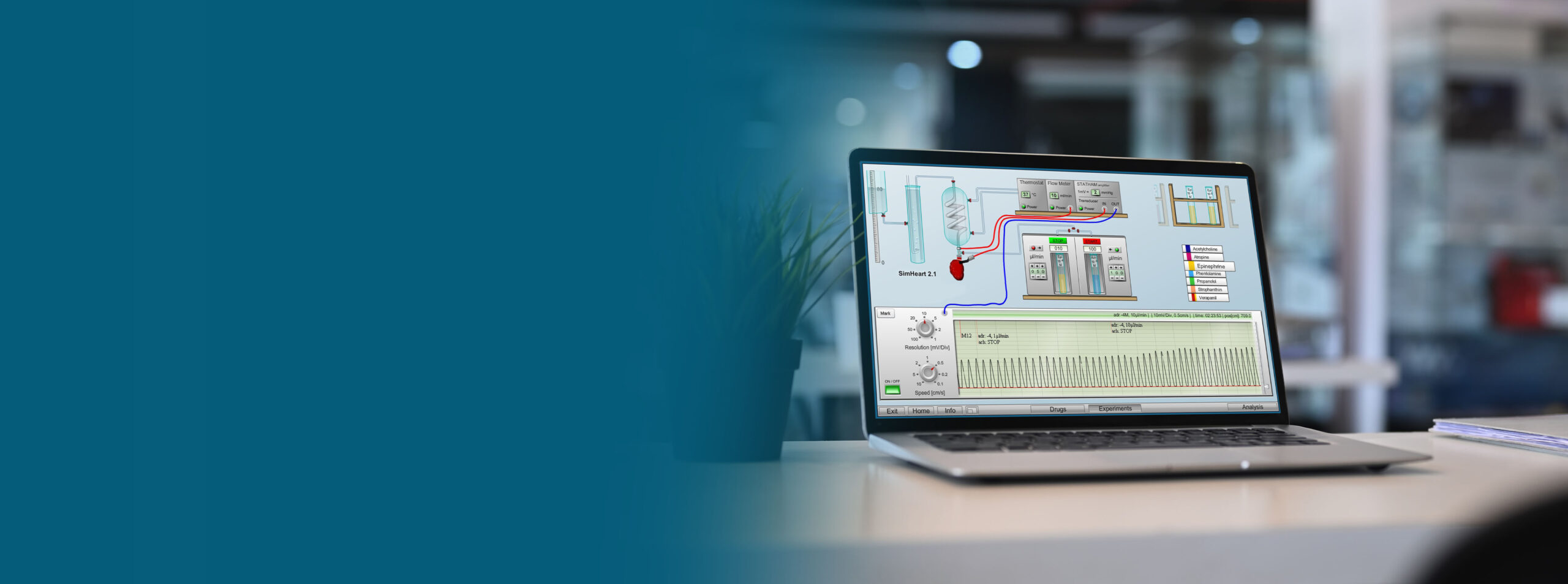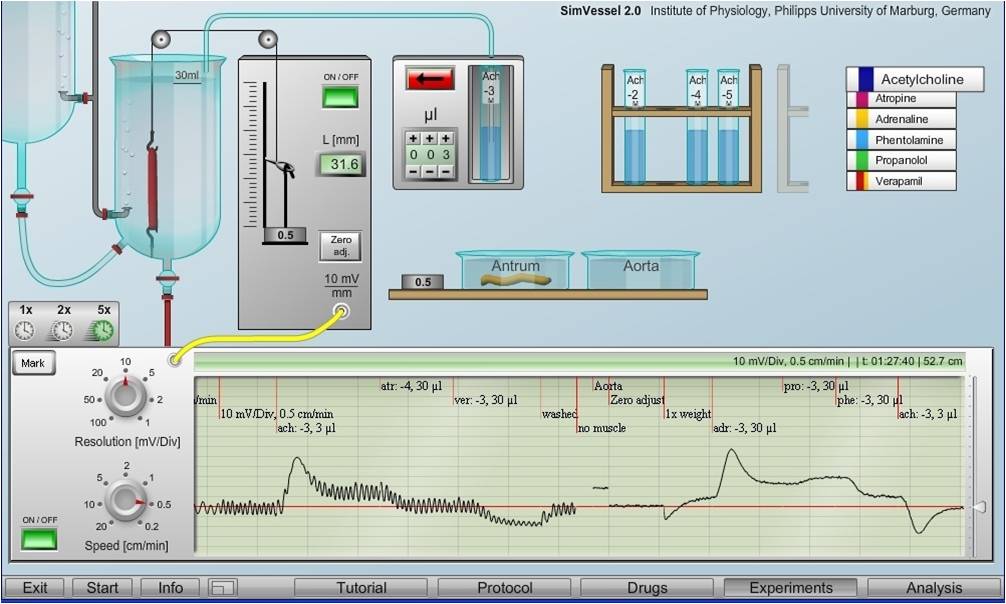
Virtual Physiology
the unique truly
simulation software
Physiology and pharmacology experiments
in virtual laboratories
almost like in the real world.
Perfect for practical courses in live science education,
also for online teaching and remote learning.
The Virtual Laboratories
The Virtual Physiology programs are going far beyond conventional teaching tools, offering realistically appearing, fully equipped laboratories on the computer screen for free experimentation.
All stimulation and recording devices are freely adjustable. Mathematical algorithms guarantee for the appropriate reactions of the preparations in all situations, also considering their physiological diversity.

SimHeart
Experiments with an isolated heart in the Langendorff set-up.

SimVessel
Experiments with smooth muscle of vessels and the intestine.

Drug laboratory
Practicing the correct preparation of the requested dilutions.

SimMuscle
Experiments with isolated
nerve-muscle preparations.

SimNerv
Experiments of compound action potential recordings from an isolated nerve.

SimNeuron
Experiments in virtual laboratories for voltage – and current – clamp.
SimHeart and SimVessel feature physiological and pharmacological experiments with the isolated, perfused heart in the Langendorff-setup and with isolated smooth muscle strips of blood vessels (aorta) and the stomach (antrum) to examine the muscle contractions after application of physiolo-gical transmitters (Acetylcholine), hormones (Adrenaline) and diverse drugs like the competitive receptor antagonists (Atropine, Phentolamine, Propranolol) and non-competitive modulators of Ca2+-currents and Ca2+-concentrations (Verapamil, g-Strophantin). An additional “Drug Laboratory” can be used practicing the correct preparation of the requested dilutions.
SimMuscle and SimNerv offer highly realistic experimental set-ups on the computer screen to record contractions of the frog’s gastrocnemic muscle (e.g. single twitches vs. tetanic contractions, muscle fatigue, curves of isometric and isotonic maxima) or compound action potentials from the frog’s sciatic nerve (dependence on electrode positions, refractory period, anode break potentials, etc.), respectively.
SimNeuron additionally allows performing widely used voltage- and current-clamp experiments in an easy to overlook lab design for recordings of current-voltage curves (reversal potentials etc.) or the threshold of action potential generation and its dependencies on stimulus strength and duration – also under application of TTX or TEA.
Didactic Aspects
Although the virtual laboratories have originally been considered as minor substitutes of experiments with animal preparations, it turned out that the virtual labs can have major didactic advantages:
The students are doing the experiments without negative emotions from the killing of an animal.
Only in the virtual laboratories the students feel free to explore the reaction of the preparation on their own – and can also learn from mistakes.
The students must not be afraid to have to kill one more animal if they destroy the preparation.
The students can be encouraged to think themselves about the most effective, eventually unconventional stimulus.
The students can be encouraged to think themselves about the most effective, eventually unconventional stimulus protocols. Intense supervision as in the wet labs is not needed.
Technically more challenging experiments like voltage- and patch-clamp recordings, that are unfeasible to be physically carried out in students’ introductory courses, can be realized in silico with a user-friendly interface.
What others say
